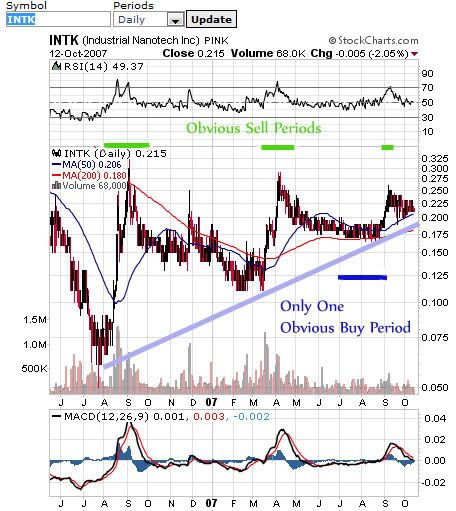For an experienced investor on the upper exchanges (NYSE, NASDAQ, AMEX), understanding how to invest on the lower exchanges of the OTC:BB and Pink Sheets takes a level of adjustment not uncommon to career changes. Too often an investor is brought into the lower exchanges by the tempting intrigue of higher returns. More than not, they carry the misconception that the factors analysts use on the upper exchanges are applicable in the lower exchanges. Yet down here, there is no compliance to industry averages, relative P/E multiples, or progressive indication through forward split notifications. Volatility exists because investor sentiment is both cautious and variable. The very trading system itself is often put into question (naked-shorting).
Therefore, a statement such as “long-term penny stock investments are tradable” ought not to be perceived as an oxymoron. Statistics will show you that investments held over the course of years often far exceed the profitability of short-term investors who habitually cash out at meager single profits. On the upper exchanges, I would tend to agree. On the lower exchanges, the additional risk would make this a foolish course of action. The hidden gems on lower exchanges will appreciate overtime, but they will also react on a consistent basis.
The concept of the game is simple. If one of your horses doubles up, consider dropping a half of your holdings. If it triples, consider retaining a third. If it quadruples, consider retaining a fourth. Etc. Learn to exercise patience. Do not feel obligated to recover your holdings right away once the profit’s been secured. Ideally, you will want to get back in and recover your holdings after a given amount of time. It is ill-advised that you reinvest your profits into the company, but rather make it your aim to recover what you sold & to retain those profits. Also, beware of becoming a day-trader. Realize that actual company progress must be the sole catalyst for your flip-trading tactics. Tangible company progress takes time. The following company is one of my favorite penny stock investments that illustrated a textbook scenario:
Industrial Nanotech

Notes:
Notice that while there were three very clear sell periods that ought to have been easy to spot by an investor who has followed the company’s stock, there was only one clear buy period. I state that this was a clear buy period because of the stiff resistance to break the floor. All other periods after the clear selling points were more volatile in nature, and offered little indication to get back in. Nevertheless, an investor that believes in the future of the company would have ventured to get back in during these time periods.





